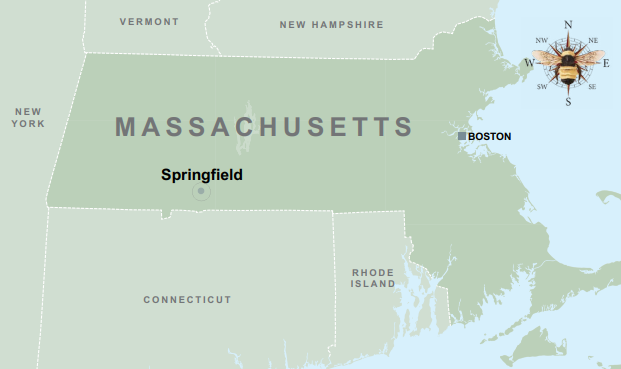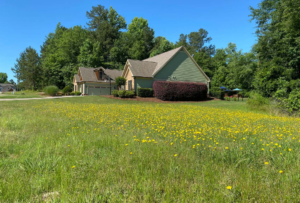Lights, Camera, Tracks! The Presence of Mammals in Residential Yards

In this article, scientists examine different land uses, from urban to suburban to rural landscapes, and their effects on wildlife. In particular, the scientists examine how different features of these landscapes affect the mammal populations found in residential yards. The scientists also wanted to know how human-provided resources and disturbances - like gardens, feeders, lights, fences, etc. - might affect mammal populations in these yards.

-
 In this FACTivity, you will observe the land use context around you. Materials: Observation log (included) Pencil or other writing utensil Scientists, like those in this study, are trying to...
In this FACTivity, you will observe the land use context around you. Materials: Observation log (included) Pencil or other writing utensil Scientists, like those in this study, are trying to...FACTivity – Lights, Camera, Tracks!
In this FACTivity, you will observe the land use context around you. Materials: Observation log (included) Pencil or other writing utensil Scientists, like those in this study, are trying to... -
 Test your understanding after reading “Lights, Camera, Tracks!” Each of the following images represents something from the article. Explain what each image represents. You may write your explanation or hold...
Test your understanding after reading “Lights, Camera, Tracks!” Each of the following images represents something from the article. Explain what each image represents. You may write your explanation or hold...eyeChallenge – Lights, Camera, Tracks!
Test your understanding after reading “Lights, Camera, Tracks!” Each of the following images represents something from the article. Explain what each image represents. You may write your explanation or hold...
Glossary
View All Glossary-

Aaron Grade
My favorite science experience was when I trained college and high school volunteers to measure birds for a scientific study. Scientists use a special kind of net called a “mist...View Profile -

Paige Warren
My favorite science experience is being outdoors with students exploring the weird and wonderful things we find in nature. Sometimes that is seeing a young person hold their first bird...View Profile -

Susannah Lerman
My favorite experience is discovering exciting birds and insects in our backyards and neighborhood parks. I spend a lot of time exploring local habitats and talking with neighbors about the...View Profile
Standards addressed in this Article:
Next Generation Science Standards
- ESS3.C-M1Human activities have significantly altered the biosphere, sometimes damaging or destroying natural habitats and causing the extinction of other species. But changes to Earth’s environments can have different impacts (negative and positive) for different living things.
- ESS3.C-M2Typically as human populations and per capita consumption of natural resources increase, so do the negative impacts on Earth unless the activities and technologies involved are engineered otherwise.
- LS2.A-M1Organisms, and populations of organisms, are dependent on their environmental interactions both with other living things and with nonliving factors.
- LS2.A-M2In any ecosystem, organisms and populations with similar requirements for food, water, oxygen, or other resources may compete with each other for limited resources, access to which consequently constrains their growth and reproduction.
- LS2.A-M3Growth of organisms and population increases are limited by access to resources.
- LS2.A-M4Similarly, predatory interactions may reduce the number of organisms or eliminate whole populations of organisms. Mutually beneficial interactions, in contrast, may become so interdependent that each organism requires the other for survival. Although the species involved in these competitive, predatory, and mutually beneficial interactions vary across ecosystems, the patterns of interactions of organisms with their environments, both living and nonliving, are shared.
- LS2.C-M1Ecosystems are dynamic in nature; their characteristics can vary over time. Disruptions to any physical or biological component of an ecosystem can lead to shifts in all its populations.
- LS2.C-M2Biodiversity describes the variety of species found in Earth’s terrestrial and oceanic ecosystems. The completeness or integrity of an ecosystem’s biodiversity is often used as a measure of its health.
Social Studies Standards
- People, Places, and Environments
- Science, Technology, and Society
- Time, Continuity, and Change
Note To Educators
The Forest Service's Mission
The Forest Service’s mission is to sustain the health, diversity, and productivity of the Nation’s forests and grasslands to meet the needs of present and future generations. For more than 100 years, our motto has been “caring for the land and serving people.” The Forest Service, an agency of the U.S. Department of Agriculture (USDA), recognizes its responsibility to be engaged in efforts to connect youth to nature and to promote the development of science-based conservation education programs and materials nationwide.

What Is the Natural Inquirer?
Natural Inquirer is a science education resource journal to be used by students in grade 6 and up. Natural Inquirer contains articles describing environmental and natural resource research conducted by Forest Service scientists and their cooperators. These scientific journal articles have been reformatted to meet the needs of middle school students. The articles are easy to understand, are aesthetically pleasing to the eye, contain glossaries, and include hands-on activities. The goal of Natural Inquirer is to stimulate critical reading and thinking about scientific inquiry and investigation while teaching about ecology, the natural environment, and natural resources.

-
Meet the Scientists
Introduces students to the scientists who did the research. This section may be used in a discussion about careers in science.
-
What Kinds of Scientist Did This Research?
Introduces students to the scientific disciplines of the scientists who conducted the research.
-
Thinking About Science
Introduces something new about the scientific process, such as a scientific habit of mind or procedures used in scientific studies.
-
Thinking About the Environment
Introduces the environmental topic being addressed in the research.
-
Introduction
Introduces the problem or question that the research addresses.
-
Method
Describes the method the scientists used to collect and analyze their data.
-
Findings & Discussion
Describes the results of the analysis. Addresses the findings and places them into the context of the original problem or question.
-
Reflection Section
Presents questions aimed at stimulating critical thinking about what has been read or predicting what might be presented in the next section. These questions are placed at the end of each of the main article sections.
-
Number Crunches
Presents an easy math problem related to the research.
-
Glossary
Defines potentially new scientific or other terms to students. The first occurrence of a glossary word is bold in the text.
-
Citation
Gives the original article citation with an internet link to the original article.
-
FACTivity
Presents a hands-on activity that emphasizes something presented in the article.
Science Education Standards
You will find a listing of education standards which are addressed by each article at the back of each publication and on our website.
We Welcome Feedback
-
Contact
Jessica Nickelsen
Director, Natural Inquirer program -
Email
Education Files
Project Learning Tree
If you are a trained Project Learning Tree educator, you may use “Then and Now,” “Improve Your Place,” and “400-Acre Wood” as additional resources.
















































